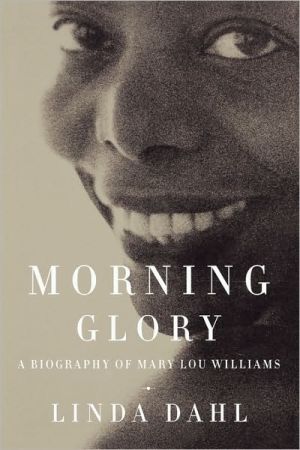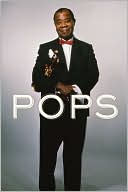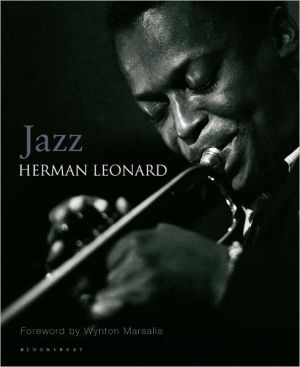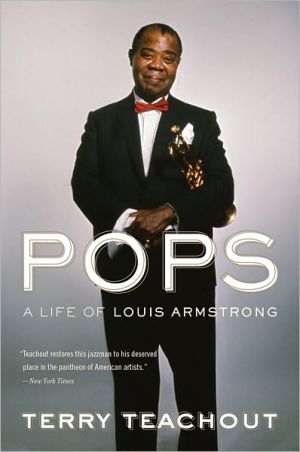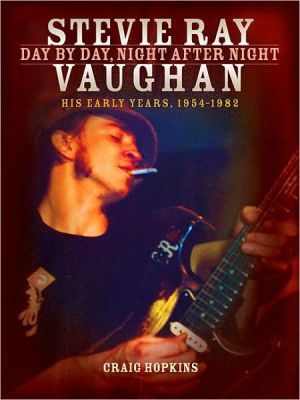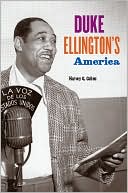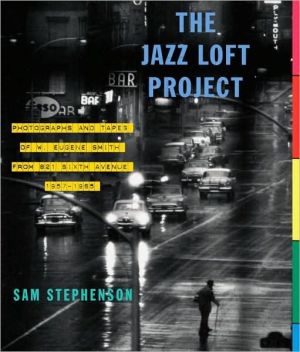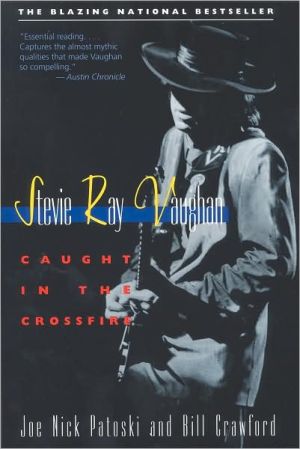Morning Glory: A Biography of Mary Lou Williams
Mary Lou Williams—pianist, arranger, composer, and probably the most influential woman in the history of jazz—receives the attention she has long deserved in this definitive biography.
Search in google:
Mary Lou Williams-pianist, arranger, composer, and probably the most influential woman in the history of jazz-receives the attention she has long deserved in this definitive biography. "[An] account of the artist's hard life and heady times. With impressive attention to detail, Dahl traces Williams from her childhood in Atlanta, where she was born in 1910, and Pittsburgh through her ongoing battle for her art on and off the bandstand." (Calvin Wilson, Kansas City Star) "Dahl's straightforward prose is filled with details gleaned from interviews and Williams' personal diary [that] highlight both the strength of Williams' character and her professionalism. In one particularly compelling and funny segment, Williams punches fellow pianist Phil Moore in the mouth after a dispute over equipment. Rather than let the sexism of the industry lay claim to her, Williams often fought toe to toe with male counterparts for respect and recognition." (Mark Anthony Neal, Emerge) "A serious and engaging historical portrait of one of jazz's greatest underappreciated figures. . . . During the 1940s Williams held piano-queen court of Café Society, the famed Greenwich Village nightspot that catered to the rich and intellectual left, and was one of the first to break the color bar. Meanwhile, she mentored bop outlaws like Thelonious Monk (who wrote 'Rhythm-a-ning' from one of her riffs), Bud Powell (who fell in love with her) and Dizzy Gillespie. Her capacity to absorb new sounds and idioms into her own voice and her restless quest to forge new forms of jazz composition had few equals." (Gene Santoro, New York Times Book Review) "This unsettling book about an unsettled woman, who became an inspiration to everyone who loved her music, can impart a history lesson about the travails of most women jazz musicians until the last two decades of the twentieth century. . . . Morning Glory should move those readers who didn't know Williams' music to go in search of it." (Leslie Gourse, Women's Review of Books) "Until the release of Linda Dahl's definitive biography, not all that much had been written about Mary Lou Williams beyond her musical life. Dahl tells the full story, warts and all, and the result is a portrayal of a very talented by troubled and often-confused woman, one with good intentions and grand schemes who was not always very realistic or able to follow through on her dreams. Dahl did a superb job of weaving together stories from relatives (including Mary Lou's first husband John Williams), friends and fellow musicians plus the pianist's own writings to tell the full Mary Lou Williams story." (Scott Yanow, Jazz Improv) Author Biography: Linda Dahl writes frequently about jazz. Her groundbreaking book Stormy Weather: The Music and Lives of a Century of Jazzwomen was published in 1984. Publishers Weekly In a time when the music of Harlem was beginning to stake a claim on the racially mixed Greenwich Village clientele, Williams, a young black pianist, trained her sights on a more classical venue. In 1947 she reached it, leading Carnegie Hall's New York Philharmonic in a boogie-woogie symphony of her own composition. Williams began her jazz career as a teenager accompanying orchestras "by ear." She soon taught herself to read and write music and gained a reputation as a masterful arranger. Her influence on the evolution of jazz spanned four decades from ragtime to bop, and can be heard in the works of jazz giants from Duke Ellington to Charlie Parker. Many musicians attribute her with genius, but lasting popular recognition has eluded her. Dahl's (Stormy Weather) narrative, while well researched, lacks the vibrancy needed to launch Williams to the fame she nearly obtained and so clearly deserves. Using a plethora of quotations, Dahl reconstructs Williams's evolution as a prodigy, a mystic, a bohemian and a religious convert, but she offers little insight into Williams's character: Dahl tells us that Williams was shy, but follows with stories of a very sassy nature; she announces that Williams's telepathic gift haunted her throughout her life, but offers scarce anecdotal evidence. Nonetheless, Dahl's comprehensive appendixes of discography, compositions and arrangements are a boon to jazz scholars, and despite its defects, this biography remains an important step toward recognizing the achievements of a remarkable woman. (Feb.) Copyright 2000 Cahners Business Information.
Introduction\ \ Mary Lou Williams's childhood, like that of Ethel Waters and Billie Holiday, two other great black female musicians of her era, was rough and short. Like Waters and Holiday, she had to earn her own livelihood while still a child, and became a woman before she was ready. Also like them, Mary succeeded against forbidding odds. Yet no matter how much she accomplished, she could not crack the carapace of her parents' fundamental indifference to the fact of her existence. It was musicians, not family, who nurtured her talent, who shared her life of poor-boy sandwiches, broken-down cars and rooming houses, the many stretches with no pay. But more than anything else, it was Mary's own innate vision of possibilities, her tremendous grit and empathy, that molded her musical gift. That and later her religious faith kept her going through many hard years -- what she called the "muck and the mud" of American show business.\ \ From the time she was a child, Mary (the name she was born with, the name her family and close friends used) had an innate sense both of the depth of her own talent and of the significance of the African-American musical heritage. Throughout a career that lasted more than half a century, she was careful to save the piles of her reviews and notices, telegrams, photographs, and other memorabilia, all of which found their way into scrapbooks that tell nearly as much about the twentieth century as they do about her own career. And there was the music, of course; she wrote stacks of it. Though a good deal of it was never commercially recorded, she saved some on a collection of private tapes.\ \ Mary had a funny, even jolly side, but she was anintensely private person, difficult to know well, and she was highly protective of her own (and others') pain. Seldom did she discuss the hurtful events in her life, and never publicly. Yet she revealed a good deal of her life story in letters and in the small spiral notebooks where she made an attempt at an autobiography. At the bottom of a dusty box of her effects, I found a piece of paper with just these four lines jotted down:\ \ Jazz created for all people.\ \ Jazz created through suffering.\ \ Got beaten everyday.\ \ And school -- Amy Frank.\ \ \ Cryptic and clipped -- a kind of Rosetta stone to her life -- these lines are emblematic of the distinctive, triumphant personal philosophy that Mary forged out of a difficult existence. They contain, I think, the essence of her personal struggle.\ \ Jazz [was] created for all people.\ \ \ With this simple, deeply felt declaration, Mary reveals her instinct and her yearning for universal acceptance and harmony. Moreover, she refuses to bow to any ethnocentrism, any limitations, from any side. Like Duke Ellington -- who said that there was good music and there was bad music -- she only reluctantly accepted the designation "jazz" for the music that was born of African-Americans.\ \ Mary sought and fought all her life for equal acceptance of this uniquely American art form within the musical power structure, the European-derived canon of symphonic music. And when in the sixties, after she had been playing professionally for more than forty years, some African-Americans criticized her when she did not jump on the Black Nationalist bandwagon, Mary replied that she did not want to go back to Africa. Yet when she started tapping her foot and bore down on the piano, there was no doubt about Mary's roots. She was, as Ellington's oft-quoted assessment of her put it, like "soul on soul." She and her music were undeniably African-American.\ \ She also saw jazz as a world music, universally accessible. Jazz would be her bridge, her passport, to other people's worlds. It was African-American music that moved her white teachers and principal to take her from her poor neighborhood to play in Pittsburgh's citadels of wealth, as later it carried her around the country, around the world. And everywhere she went, she found an audience that responded to the music she played.\ \ Jazz [was] created through suffering.\ \ \ When Mary discovered as a little girl, as gifted children do, that she could live in her head, she found in the world of her people's music what she could not find in her family: order, grace, a meaning beyond daily struggle. Moreover, she built up a richly mystical interior life (if at times out of balance) through her music. Gaining meaning through suffering was, indeed, a major motif for Mary. It gave incalculable emotional heft and resonance to her playing, especially after her conversion to Catholicism in the mid-1950s, when the Christian tenet of redemption alleviated her own emotional pain and answered a lifetime of searching for meaning. But Mary's concern was not so much with her own suffering; rather, she focused on the historical impact of suffering on a people -- black people in America. As a little girl, she would eavesdrop on conversations of her elders about the cruelties of slavery, the wickedness of racism. She came to understand how the slaves, out of their anguished condition, developed a vital musical communication, combining spirituals and work songs with rhythms that, in Mary's words, "reached deep into the inner self, giving expression of sincere joy." This was her definition of jazz, and she played it that way.\ \ But even as Mary became convinced from her own experience that one's "crosses," as she liked to call her sufferings, can deepen and even ennoble a person's character, she grew aware that for many people, suffering merely degrades and deadens hope. She became a rescuer, trying to help many desperate people, most of them musicians. At times she was abused for her kindness, and seldom was she able to rehabilitate others. After some years of this, she noted, sadly, that some people were too weak to withstand suffering and come out the other side to redemption. But she never stopped caring.\ \ \ Continually tested in the tempering fire, Mary played the strongest music of her life when she was old and in great physical pain. She had mastered the blues, alchemizing the form into boiling restiveness or tender lyricism or resolute triumph. If she had any one message, it was that jazz meant very little indeed if it lacked the emotional resonance that comes from understanding not only the form of the music but where the blues came from. "You ain't said nothin'," she played in a song, "'til you play the blues."\ \ \ Got beaten everyday.\ \ \ Mary left few clues about the cruelty she knew as a child, none so stark as this: Got beaten everyday. Nearly everything worked against her as a young person -- her place and time, her class, her race, and her sex. During her early years, child labor was common, often necessary, to feed a family, and many of the harsh childrearing dictates of the brutal slave era had survived. Mary's was an impoverished southern family, struggling in the cold, smoke-choked air of Pittsburgh, where the family defenses -- the demons of drink and indifference -- flourished. Mary and her older sister both left home when they were barely in their teens, but their ties to the family remained steadfast and they continued to feel responsible for their younger brothers and sisters. If music became Mary's refuge, her castle, her life, conditions on the road in the 1920s were often as meager, mean, and violent as at home. Mary wrote only peripherally about beatings and neglect from her mother and from the flawed musician lovers who attracted her with their highly intelligent, sensitive playing, but who could become violent when they drank. But clues are scattered in her diaries and in snapshots where her shy, beautiful, smiling face is shadowed by pain. Though she accepted it, kept quiet about it, physical violence cast a long shadow across her life.\ \ And school -- Amy Frank.\ \ \ A careful separation, this, between the private violence of family, and the public. Mary's family, one of thousands of southern black families that poured into the industrial North seeking a better life, were feared and resented by other recent poor immigrants. In Germantown, where Mary's family, the Risers, moved, the neighborhood was composed mostly of Poles, Italians, and Germans. Amy Frank was a white youngster from Germantown, a schoolmate at the red-brick Lincoln School who bullied eight-year-old Mary, just arrived in a cheap cotton shift and her mother's narrow black Oxfords. Rocks were thrown, followed by taunts, hair-pulling, shoving, slaps. As if that were not enough, the light-skinned blacks who lived nearby ostracized her: with her satiny dark brown skin color, Mary was judged too dark for the café au lait children to play with.\ \ But Mary had a special gift. A child prodigy, she could play back by ear on the piano nearly anything she heard and obligingly performed the pop tunes of the day whenever she was asked. Soon, she was welcome as the "little piano girl of East Liberty" at the parlor pianos in all the houses around the neighborhood, taming Amy Frank and the rest as she took requests, and climbing into chauffeured cars to be taken to entertain the wealthy at bridge parties in their hillside mansions above the smoke and slums of the city. It was the first of many dragons she would slay in her life with her beautiful music.\ \
\ Publishers Weekly - Publisher's Weekly\ In a time when the music of Harlem was beginning to stake a claim on the racially mixed Greenwich Village clientele, Williams, a young black pianist, trained her sights on a more classical venue. In 1947 she reached it, leading Carnegie Hall's New York Philharmonic in a boogie-woogie symphony of her own composition. Williams began her jazz career as a teenager accompanying orchestras "by ear." She soon taught herself to read and write music and gained a reputation as a masterful arranger. Her influence on the evolution of jazz spanned four decades from ragtime to bop, and can be heard in the works of jazz giants from Duke Ellington to Charlie Parker. Many musicians attribute her with genius, but lasting popular recognition has eluded her. Dahl's (Stormy Weather) narrative, while well researched, lacks the vibrancy needed to launch Williams to the fame she nearly obtained and so clearly deserves. Using a plethora of quotations, Dahl reconstructs Williams's evolution as a prodigy, a mystic, a bohemian and a religious convert, but she offers little insight into Williams's character: Dahl tells us that Williams was shy, but follows with stories of a very sassy nature; she announces that Williams's telepathic gift haunted her throughout her life, but offers scarce anecdotal evidence. Nonetheless, Dahl's comprehensive appendixes of discography, compositions and arrangements are a boon to jazz scholars, and despite its defects, this biography remains an important step toward recognizing the achievements of a remarkable woman. (Feb.) Copyright 2000 Cahners Business Information.\ \ \ \ \ Library JournalDahl, a frequent contributor to jazz publications and the author of Stormy Weather: The Music and Lives of a Century of Jazz Women, presents here an overdue and definitive portrait of one of the 20th century's most important and overlooked jazz figures, the troubled pianist, composer, and arranger Mary Lou Williams. Relating Williams's story without sentimentality or sensationalism, Dahl portrays her as a woman who transcended economic and gender obstacles to create an enduring legacy in the notoriously male-dominated world of jazz. Although the book does not require familiarity with music theory, it manages to interweave the details of Williams's life with the development of her music and her contributions to a variety of styles. Dahl details Williams's influence on and collaboration with some of the premier names in jazz--Duke Ellington, Thelonius Monk, and Bud Powell--and her late-life religious conversion that resulted in a number of ambitious sacred music projects. This highly readable title is essential for jazz studies collections, suitable for women's history collections, and recommended for all collections.--Mark Brooks Woodhouse, Elmira Coll. Lib., NY Copyright 2000 Cahners Business Information.\ \ \ LesterA must-read biography of the incomporable Mary Lou Williams...I am forever greatful to Linda Dahl for giving Williams back to us in this new book.\ —Sojourner\ \
